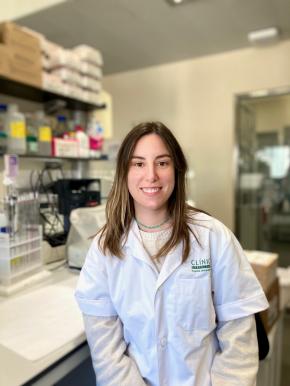- The Foundation
- Aims
- Research Activities
- News
- FOUNDATIONCONTACT
- SCIENTIFIC ACTIVITYPublications
- Studies
- Score Calculators
 Study points to the protective role of albumin in maintaining mitochondrial ultrastructure and function during inflammation as a result of liver injury.
Study points to the protective role of albumin in maintaining mitochondrial ultrastructure and function during inflammation as a result of liver injury.
BARCELONA—Mitochondria are the primary source of reactive oxygen species contributing to the activation of an inflammatory response in a wide range of pathophysiological conditions such as liver cirrhosis. In patients with decompensated cirrhosis serum albumin levels are low, and albumin is usually given to these patients to prevent and treat several complications of cirrhosis. Albumin is synthesized in the liver and is the most abundant protein in the bloodstream contributing to plasma oncotic pressure by retaining water into the intravascular space. Albumin binds and moves many small molecules through the blood, including certain drugs. It plays an important role as a modulator of the immune response to pathogens and exerts a protective effect on hepatocytes against the pro-inflammatory cytokine tumor necrosis factor alpha (TNFα) as reported in a previous study. In this study, researchers of the European Network for Translational Research (ENTR) from EF CLIF, Hospital Clínic de Barcelona-Institut d’Investigacions Biomèdiques August Pi i Sunyer (IDIBAPS), and Grifols explored the role of albumin in maintaining mitochondrial homeostasis during inflammation in a series of experiments using a mouse model of TNFα-induced liver injury, liver slice cultures and isolated hepatocytes from wild-type mice. The study first published on 21 February 2023 in FASEB Journal provides new insights into the mechanism by which albumin may protect hepatocytes from excessive oxidative stress, contribute to the homeostatic control of mitochondrial metabolism and support normal function of the liver.
Picture: © Marta Duran-Güell.
When liver slices were incubated with TNFα in the absence of albumin, researchers observed changes in mitochondria density, size and shape that were partially rescued in the presence of albumin. Interestingly, abnormal ultrastructural features in hepatocyte mitochondria appeared not to alter the mitochondrial membrane potential, an essential component in the process of energy production during oxidative phosphorylation. In the absence of albumin, TNFα induced mitochondrial oxidative stress. However, the increase of hepatocyte mitochondrial respiration was not associated with an increase in energy production and albumin appeared not to modulate any of these processes. Instead, albumin reduced TNFα-induced fatty acid β-oxidation – the process by which fatty acids are broken down to produce energy. The authors found that exposure to TNFα favored the use of acetyl-carnitine over isocitrate as energy substrate. Indeed, TNFα led to a breakpoint after isocitrate in the tricarboxylic acid cycle – the major energy-yielding metabolic pathway in the cell – that was counteracted by albumin. In contrast, when hepatocytes were submitted to transcriptional arrest, TNFα led to a different breakpoint in the tricarboxylic acid cycle that resulted in the accumulation of succinate. Under transcriptional arrest conditions, deregulation of the tricarboxylic acid cycle by TNFα was not only rescued by albumin, but albumin had also the ability to prioritize succinate as energy substrate.
The antioxidant action of albumin appeared to be mediated via activating transcription factor 3 (ATF3) – a key modulator of the response to oxidative stress. Indeed, hepatocytes cultured with TNFα in the presence of albumin, showed increased expression of the Atf3 gene and ATF3 protein. These observations were confirmed in vivo using a mouse model of TNFα-induced liver injury, providing further evidence of the mechanism by which albumin contributes to preserving hepatocyte mitochondria function and liver homeostasis.
“It is well characterized that albumin is an effector molecule that once internalized by cells is able to block endosomal Toll-like receptor signaling, lysosomal cathepsin B leakage, mitochondrial cytochrome c release and caspase-3 activity. In this study we have also discovered the antioxidant protective actions of albumin in hepatocytes through the activation of the common stress-responsive transcription factor ATF3”, said Marta Duran-Güell, leading author on the paper and post-doctoral researcher at Inflammation and Hepatic Diseases group at Hospital Clínic de Barcelona-IDIBAPS, Spain.
“These results highlight the beneficial effects of albumin to protect organs and tissues against inflammatory injury and oxidative stress, and accentuate the importance of maintaining the albumin levels within the normal range in patients with decompensated cirrhosis which present recurrent hypoalbuminemia”, concluded Clària, Principal Investigator at EF CLIF and Hospital Clínic de Barcelona-IDIBAPS, Spain.
This study was promoted by the European Foundation for the Study of Chronic Failure (EF CLIF). This study received funding from the Government of Catalonia, 2017SGR1449 and Ministerio de Ciencia e Innovación (MICINN), PID2019-105240RB-I00.
Other authors on the study are Marta Duran-Güell, Glòria Garrabou, Roger Flores-Costa, Mireia Casulleras, Cristina López-Vicario, Ingrid W. Zhang, Judith Cantó-Santos, Bryan J. Contreras, María B. Sánchez-Rodríguez, Berta Romero-Grimaldo, Raquel Horrilo, Montserrat Costa, and Vicente Arroyo.
Publication information
Duran-Güell, M.; Garrabou, G.; Flores-Costa, R.; Casulleras, M.; López-Vicario, C.; Zhang, I. W.; Cantó-Santos, J.; Contreras, B. J.; Sánchez-Rodríguez, M. B.; Romero-Grimaldo, B.; Horrillo, R.; Costa, M.; Arroyo, V.; Clària, J. Essential role for albumin in preserving liver cells from TNFα-induced mitochondrial injury. FASEB J. 2023, 37 (3), e22817. DOI: 10.1096/fj.202201526R